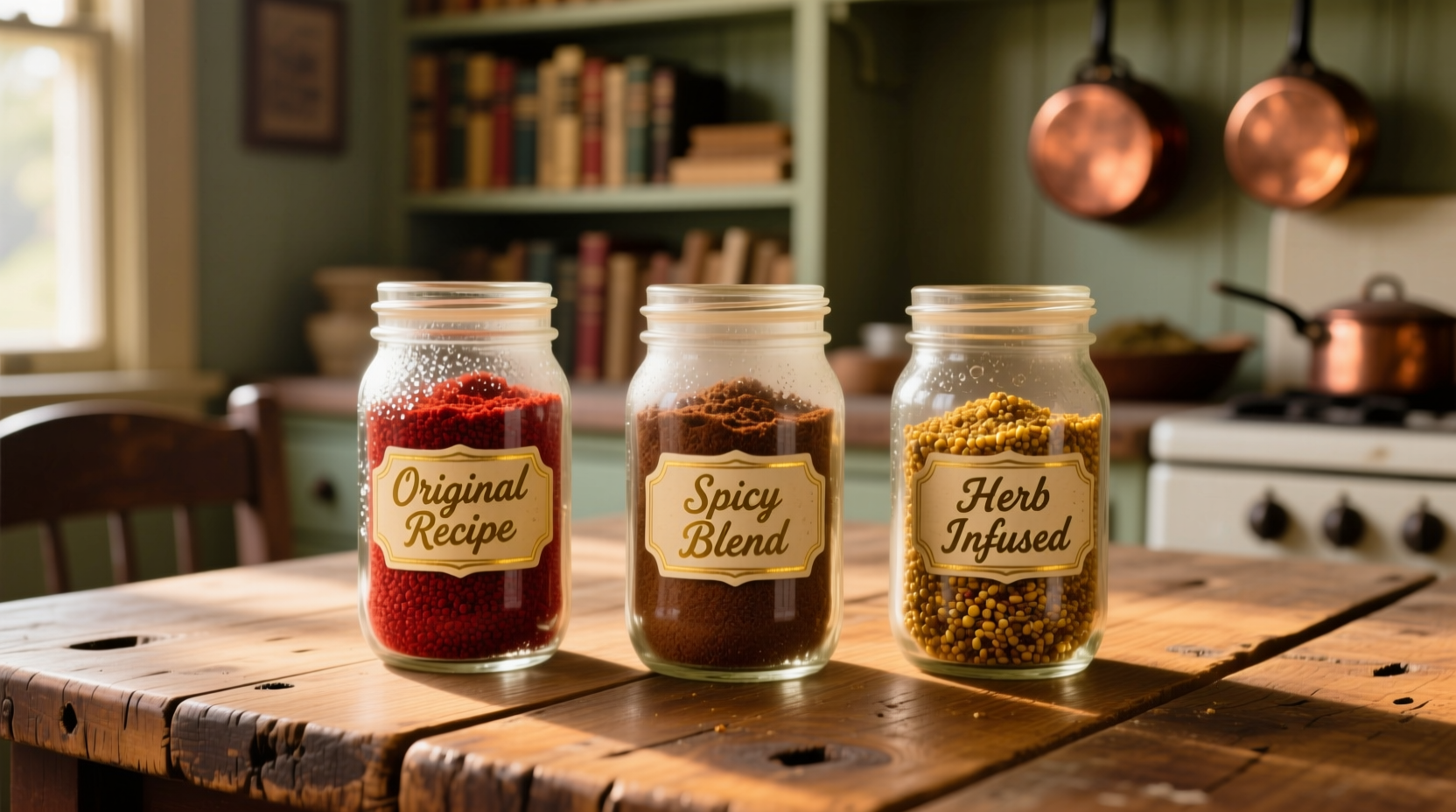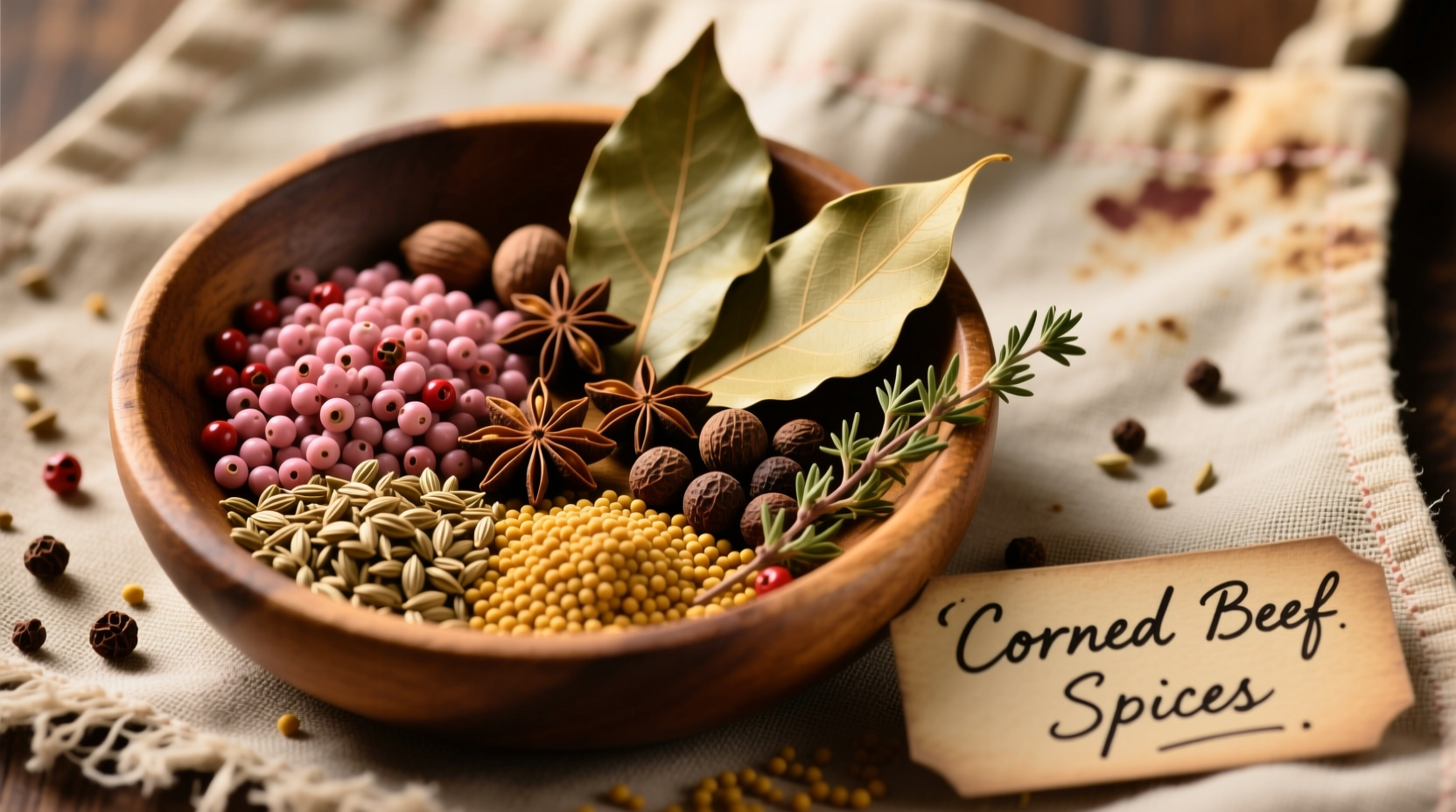The essential spices in traditional corned beef include mustard seeds, coriander seeds, allspice berries, cloves, and bay leaves. Most commercial and homemade corned beef spice blends also contain black peppercorns, with some variations adding red pepper flakes, ginger, or nutmeg for complexity.
Ever wondered why your corned beef has that distinctive aromatic flavor? Understanding the precise spice blend isn't just about following a recipe—it's the key to achieving that perfect balance of warmth, earthiness, and subtle heat that defines authentic corned beef. Whether you're preparing for St. Patrick's Day or simply craving a classic comfort meal, knowing exactly which spices work together and why will transform your cooking from ordinary to exceptional.
The Essential Corned Beef Spice Components
While regional variations exist, the core spice blend for corned beef has remained remarkably consistent throughout culinary history. These spices work synergistically during the brining process to create that signature flavor profile:
| Spice | Flavor Contribution | Typical Amount (per 3-4 lb brisket) |
|---|---|---|
| Mustard seeds | Sharp, pungent base note | 1-2 tablespoons |
| Coriander seeds | Citrusy, floral undertone | 1-2 tablespoons |
| Allspice berries | Warm, complex blend of cinnamon, nutmeg, clove | 1-2 teaspoons |
| Cloves | Intense warmth and depth | 6-8 whole cloves |
| Bay leaves | Earthy, herbal background | 2-3 leaves |
| Black peppercorns | Sharp heat and complexity | 1-2 tablespoons |
This historical spice combination dates back to traditional Irish and Eastern European preservation methods. According to culinary research documented by the National Cattlemen's Beef Association, these specific spices were chosen not only for flavor but for their antimicrobial properties that helped preserve meat before refrigeration.
Creating Your Perfect Homemade Spice Blend
When making your own corned beef spice mix, understanding the chemistry behind each component helps you achieve restaurant-quality results at home. Professional chefs at the Culinary Institute of America emphasize that whole spices provide superior flavor compared to pre-ground versions because they retain essential oils longer.

Step-by-step preparation:
- Dry toast spices (except bay leaves) in a skillet over medium heat for 2-3 minutes until fragrant—this activates essential oils
- Cool completely before storing or using to prevent premature flavor degradation
- Store in airtight container away from light for up to 6 months
- Use 2-3 tablespoons of your blend per gallon of brine solution
Regional Variations and When to Use Them
While the basic spice profile remains consistent, regional adaptations offer interesting twists that suit different culinary applications:
- Irish-American style: Features more prominent mustard and coriander, with optional red pepper flakes for subtle heat—ideal for traditional boiled dinners
- New England variation: Includes additional whole allspice and sometimes a touch of brown sugar—perfect for corned beef hash
- Modern gourmet approach: May incorporate star anise or cardamom for complexity—best suited for smoked corned beef preparations
Understanding these regional differences helps you select the right spice profile for your specific preparation method. Food historians at the International Culinary Center note that these variations emerged as immigrant communities adapted traditional recipes to available ingredients in their new homelands.
Avoiding Common Spice-Related Mistakes
Many home cooks make these critical errors when working with corned beef spices:
- Using pre-ground spices—loses volatile compounds during brining
- Over-toasting spices—creates bitter notes that dominate the final product
- Incorrect spice-to-brine ratio—too little results in bland meat, too much creates overwhelming flavor
- Adding spices too late—needs minimum 5-day brining time for proper flavor penetration
Professional chefs recommend using a mesh spice bag for easy removal after brining. This technique, documented in the USDA's Food Safety and Inspection Service guidelines, ensures even distribution without leaving spice particles in your final dish.
How Spices Interact with the Brining Process
The magic of corned beef happens during the brining process, where spices work alongside salt and curing agents. Food science research shows that whole spices release their flavor compounds gradually through diffusion, with different spices contributing at different stages:
- Days 1-2: Mustard seeds and peppercorns begin releasing sharp notes
- Days 3-4: Coriander and allspice start contributing floral and warm elements
- Days 5-7: Cloves and bay leaves provide depth and complexity
This gradual release creates the layered flavor profile characteristic of properly prepared corned beef. Rushing the process by using ground spices or reducing brining time results in one-dimensional flavor.
Frequently Asked Questions
Can I substitute ground spices for whole spices in corned beef?
While possible in a pinch, ground spices aren't recommended as they lose volatile compounds quickly during brining. Whole spices maintain flavor integrity throughout the 5-7 day curing process. If substituting, use half the amount of ground spices since they're more concentrated.
How long should corned beef brine with spices?
For optimal flavor development, corned beef should brine for 5-7 days. This allows sufficient time for the spice compounds to fully penetrate the meat. Shorter periods (3-4 days) work for thinner cuts, but the complex spice profile develops best with the full week.
What's the difference between corned beef spice and pickling spice?
Corned beef spice is a specific variation of pickling spice. While both contain similar components, corned beef spice typically has higher proportions of mustard seeds and coriander, with less cinnamon or other sweet spices commonly found in general pickling blends.
Can I reuse corned beef spice mix?
No, spice blends should not be reused for food safety reasons. The USDA recommends discarding used spice mixtures after one brining cycle as they may harbor bacteria. Create a fresh blend for each batch of corned beef.











 浙公网安备
33010002000092号
浙公网安备
33010002000092号 浙B2-20120091-4
浙B2-20120091-4